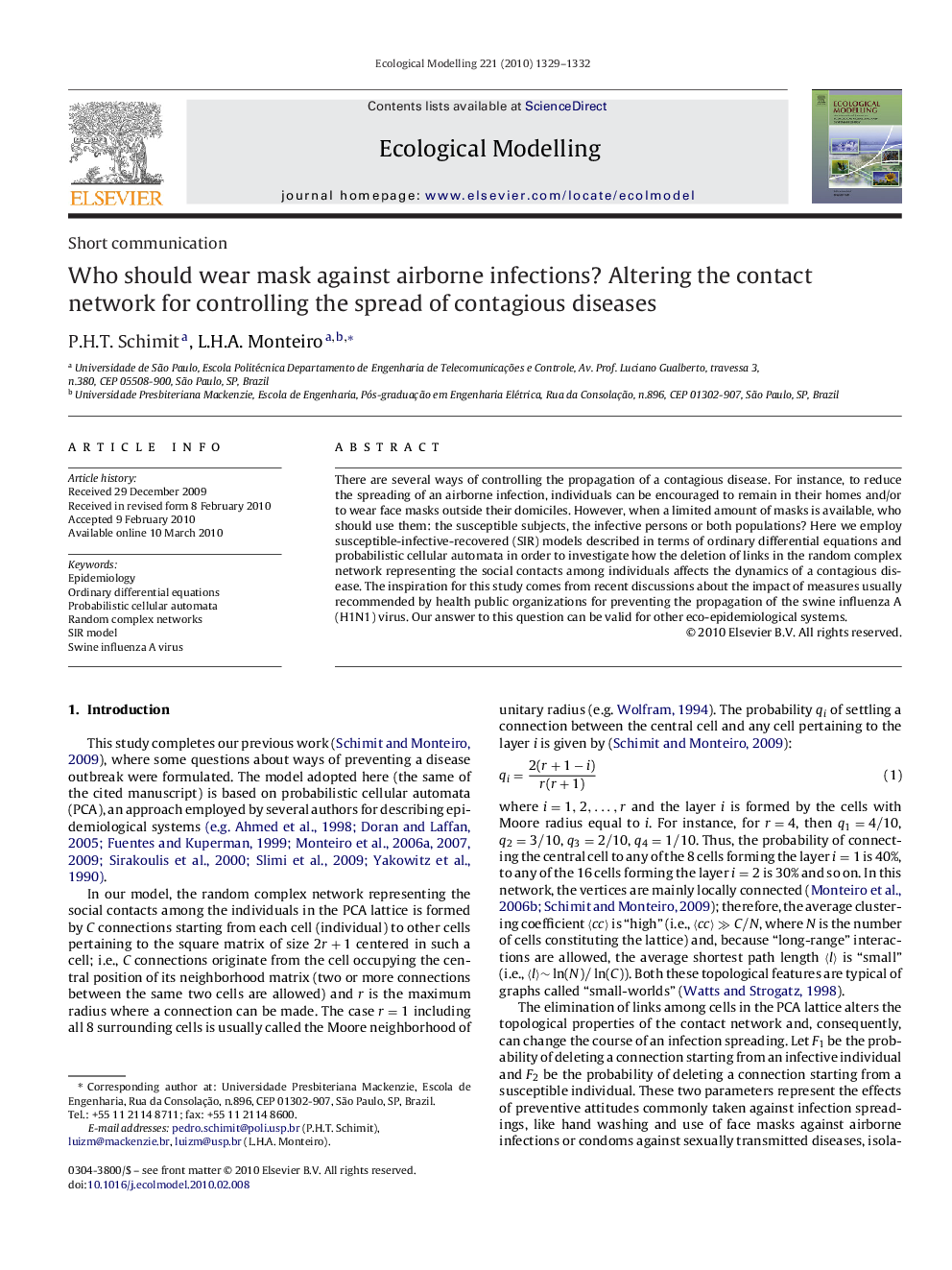| Article ID | Journal | Published Year | Pages | File Type |
|---|---|---|---|---|
| 4377369 | Ecological Modelling | 2010 | 4 Pages |
Abstract
There are several ways of controlling the propagation of a contagious disease. For instance, to reduce the spreading of an airborne infection, individuals can be encouraged to remain in their homes and/or to wear face masks outside their domiciles. However, when a limited amount of masks is available, who should use them: the susceptible subjects, the infective persons or both populations? Here we employ susceptible-infective-recovered (SIR) models described in terms of ordinary differential equations and probabilistic cellular automata in order to investigate how the deletion of links in the random complex network representing the social contacts among individuals affects the dynamics of a contagious disease. The inspiration for this study comes from recent discussions about the impact of measures usually recommended by health public organizations for preventing the propagation of the swine influenza A (H1N1) virus. Our answer to this question can be valid for other eco-epidemiological systems.
Keywords
Related Topics
Life Sciences
Agricultural and Biological Sciences
Ecology, Evolution, Behavior and Systematics
Authors
P.H.T. Schimit, L.H.A. Monteiro,
